Berry, Joseph “Joe”, born 28-02-1920 in Quarrington, County Durham, 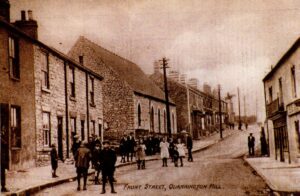 United Kingdom, to Arthur Joseph and mother Mary Rebecca, born Charlton. Joseph had a on brother, Jack and one sister, Ivy. Joseph lived at 55 Ramsey St, Cassop cum Quarrington, Teesdale (12 miles east of Crook, Co Durham). Later he moved to Stampeth Nr Alnwick (Northumberland) where from 1931 to 1936 he attended the Duke Grammar School.
United Kingdom, to Arthur Joseph and mother Mary Rebecca, born Charlton. Joseph had a on brother, Jack and one sister, Ivy. Joseph lived at 55 Ramsey St, Cassop cum Quarrington, Teesdale (12 miles east of Crook, Co Durham). Later he moved to Stampeth Nr Alnwick (Northumberland) where from 1931 to 1936 he attended the Duke Grammar School.  Leaving school in 1936 as a 16 year old Joe moved into lodgings in Carlton, Nottingham for his work in the Inland Revenue, two years later he met Joyce who was working at the same branch. Joe enlisted in the RAFVR (Royal Air Force Volunteer Reserve) in August 1940, and in March 1942 Joe and Joyce were married. Little is known of Joseph Berry’s early service. On completion of training as a Fighter Pilot he was posted to 256 Squadron
Leaving school in 1936 as a 16 year old Joe moved into lodgings in Carlton, Nottingham for his work in the Inland Revenue, two years later he met Joyce who was working at the same branch. Joe enlisted in the RAFVR (Royal Air Force Volunteer Reserve) in August 1940, and in March 1942 Joe and Joyce were married. Little is known of Joseph Berry’s early service. On completion of training as a Fighter Pilot he was posted to 256 Squadron  at Squires Gate Nr Blackpool, this was a Night Fighter Squadron flying Defiants, on one occasion having to bail out of his stricken aircraft (letter code JT). He was commissioned in March 1942 at Squires Gate, this Squadron was then transferred to Woodvale, South Port flying Beaufighters.
at Squires Gate Nr Blackpool, this was a Night Fighter Squadron flying Defiants, on one occasion having to bail out of his stricken aircraft (letter code JT). He was commissioned in March 1942 at Squires Gate, this Squadron was then transferred to Woodvale, South Port flying Beaufighters. 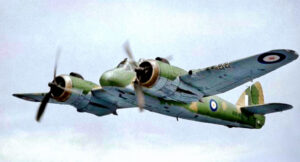 Joseph was initially posted to Lyneham in Kent where he and fellow pilot Bryan Wild
Joseph was initially posted to Lyneham in Kent where he and fellow pilot Bryan Wild 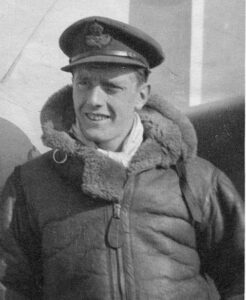 caught a train to Filton, Bristol to collect their brand new Beaufighters, later flying them to Setif, in the Atlas Mountains. This area in North Africa was a pilot pool, where air crew from the United Kingdom awaited posting to their various squadrons in the region; Casablanca to Tunisia costal area. After 3 weeks they were called to join 153 Squadron
caught a train to Filton, Bristol to collect their brand new Beaufighters, later flying them to Setif, in the Atlas Mountains. This area in North Africa was a pilot pool, where air crew from the United Kingdom awaited posting to their various squadrons in the region; Casablanca to Tunisia costal area. After 3 weeks they were called to join 153 Squadron  at Maison-Blanche Algiers. 153 Squadron was formed at Ballyhalbert on the 14-10-1941, from A flight of 256 Squadron with Boulton Paul Defiants 1s.
at Maison-Blanche Algiers. 153 Squadron was formed at Ballyhalbert on the 14-10-1941, from A flight of 256 Squadron with Boulton Paul Defiants 1s. 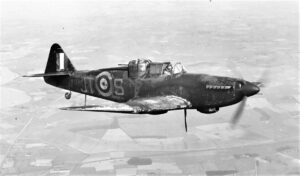 It had previously been disbanded following the first world war. It became operational in December 1941 as a night fighter squadron, but it was not until January 1942 that they converted to Beaufighter Mk 1s. Throughout the summer of 1942 the squadron carried out night patrols, and in September their role extended to convoy patrols, in December 1942, 153 Squadron moved to Algiers to become operational on Christmas Day. It retained its role through to July 1943 with the night defence of the Algiers and Bone areas. Gradually, throughout this period, the squadron’s role extended to convoy escort work. As the Sicilian campaign got under way, 153 Squadron remained in North Africa carrying out convoy escort work (letter code TB). The main duty of this Night-fighter unit was to repel German aircraft from attacking convoys in the Mediterranean, on the Gibraltar to Suez route. By Jan 1943 he and his observer, a Newcastle man called Ian Reay Watson
It had previously been disbanded following the first world war. It became operational in December 1941 as a night fighter squadron, but it was not until January 1942 that they converted to Beaufighter Mk 1s. Throughout the summer of 1942 the squadron carried out night patrols, and in September their role extended to convoy patrols, in December 1942, 153 Squadron moved to Algiers to become operational on Christmas Day. It retained its role through to July 1943 with the night defence of the Algiers and Bone areas. Gradually, throughout this period, the squadron’s role extended to convoy escort work. As the Sicilian campaign got under way, 153 Squadron remained in North Africa carrying out convoy escort work (letter code TB). The main duty of this Night-fighter unit was to repel German aircraft from attacking convoys in the Mediterranean, on the Gibraltar to Suez route. By Jan 1943 he and his observer, a Newcastle man called Ian Reay Watson  , were flying Beaufighters as a night fighter pilot with 255 Squadron
, were flying Beaufighters as a night fighter pilot with 255 Squadron 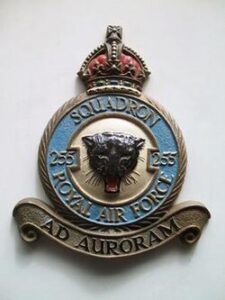 in the Mediterranean. On the 15th of November the aircraft were flown to Maison Blanche in Algeria. Detachments flew from Bone, Setif, Souk el Arba, Souk el Khemis, and Tingley. August brought a move to Western Sicily, where sorties were flown over the Salerno invasion fleet and beachhead in September. This is where Joseph opened his account; shooting down three enemy aircraft, on the 9th September a Messerschmitt Me210,
in the Mediterranean. On the 15th of November the aircraft were flown to Maison Blanche in Algeria. Detachments flew from Bone, Setif, Souk el Arba, Souk el Khemis, and Tingley. August brought a move to Western Sicily, where sorties were flown over the Salerno invasion fleet and beachhead in September. This is where Joseph opened his account; shooting down three enemy aircraft, on the 9th September a Messerschmitt Me210, 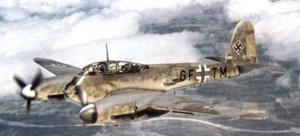 the 10th September another Me210 over the Salerno area, and on 24th October a Junkers Ju88
the 10th September another Me210 over the Salerno area, and on 24th October a Junkers Ju88 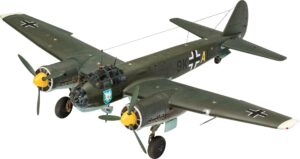 over the Naples area, and the second occasion in which he had to bail out of his aircraft (letter code YD). On the 03-10-1943 while serving with 255 Squadron in the Mediterranean, Joe was involved in the Great E-Boat Raid at Cos (Greece). 60 aircraft were involved; several Beaufighter and 1 Beafort Squadron attacked the German Invasion Force North of the Allied occupied Island. The German invasion force consisted of several large vessels used as Troop Ships, Destroyers, E-Boats and Landing Barges. The attack had mixed results, due to heavy enemy fire and bad weather with head winds on the return journey; the Squadrons took overall losses of 27%. The Beaufighter had a range of 370 miles, and due to heavy fuel consumption 25 got back, most of the others ditched or were shot down. Joseph was awarded a Distinquest Flying Cross, DFC
over the Naples area, and the second occasion in which he had to bail out of his aircraft (letter code YD). On the 03-10-1943 while serving with 255 Squadron in the Mediterranean, Joe was involved in the Great E-Boat Raid at Cos (Greece). 60 aircraft were involved; several Beaufighter and 1 Beafort Squadron attacked the German Invasion Force North of the Allied occupied Island. The German invasion force consisted of several large vessels used as Troop Ships, Destroyers, E-Boats and Landing Barges. The attack had mixed results, due to heavy enemy fire and bad weather with head winds on the return journey; the Squadrons took overall losses of 27%. The Beaufighter had a range of 370 miles, and due to heavy fuel consumption 25 got back, most of the others ditched or were shot down. Joseph was awarded a Distinquest Flying Cross, DFC ![]() in March 1944. In June of that year, promoted Flt.Lt., (Flight Lieutenant) he was posted to the FIU and flying Mosquitos. FIU formed a special flight of Tempests to intercept the V1s
in March 1944. In June of that year, promoted Flt.Lt., (Flight Lieutenant) he was posted to the FIU and flying Mosquitos. FIU formed a special flight of Tempests to intercept the V1s 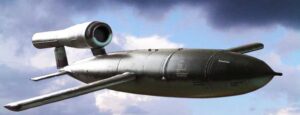 which had begun falling on south-east England, this flight operating mainly by night. Over the next two months Joseph was to establish himself as the top-scorer against these robots in Tempest, shooting down 52 and one shared by early August. On 23 July he set the record, claiming seven in one night. Four nights later he pursued one at low level over West Malling airfield, closing to 100 feet in order to ensure he destroyed it before it fell on the base. His own aircraft was damaged in the resultant explosion. To his obvious chagrin on this occasion it was decided that he had to share this success with the crew of a Mosquito
which had begun falling on south-east England, this flight operating mainly by night. Over the next two months Joseph was to establish himself as the top-scorer against these robots in Tempest, shooting down 52 and one shared by early August. On 23 July he set the record, claiming seven in one night. Four nights later he pursued one at low level over West Malling airfield, closing to 100 feet in order to ensure he destroyed it before it fell on the base. His own aircraft was damaged in the resultant explosion. To his obvious chagrin on this occasion it was decided that he had to share this success with the crew of a Mosquito  who had opened fire from 1,000 yards, and in the opinion of FIU had missed hopelessly. On 16-08-1944 the Tempest flight moved to Manston to reform 501 Squadron,
who had opened fire from 1,000 yards, and in the opinion of FIU had missed hopelessly. On 16-08-1944 the Tempest flight moved to Manston to reform 501 Squadron,  of which Berry became commanding officer. The unit continued to hunt V1s, and he personally accounted for seven more, receiving a Bar to his DFC
of which Berry became commanding officer. The unit continued to hunt V1s, and he personally accounted for seven more, receiving a Bar to his DFC  during September. During the night of 27/28 September, with the V1 threat mainly negated by the Allied advance in France, he led two Tempests on a Ranger sortie over Holland, strafing trains.
during September. During the night of 27/28 September, with the V1 threat mainly negated by the Allied advance in France, he led two Tempests on a Ranger sortie over Holland, strafing trains.
Death and burial ground of Berry, Joseph “Joe”.

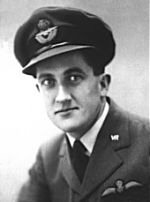

From Bradwell Bay before dawn at 05-35 on the 01-10-1944 flying his Tempest SD-F 
Berry led a Ranger sortie with Flight Lieutenant Willy “Bull” Williams SD-L 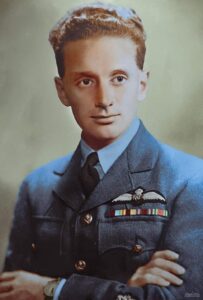 and F/Lt C.A. Horry Hansen SD-H to attack ground targets of opportunity between Bad Zwischenhan in Northern Germany, a He111
and F/Lt C.A. Horry Hansen SD-H to attack ground targets of opportunity between Bad Zwischenhan in Northern Germany, a He111  airfield; and a nearby rail yard where trains transporting V1s to these airfields and launch sites could be found, and any other He111 airfields or enemy targets of opportunity from there to the Rhine. But while flying fast and low to their target; bursts of small arms fire from a German soldier, stationed at the German Radar Site Gazzelle just East of Veendam
airfield; and a nearby rail yard where trains transporting V1s to these airfields and launch sites could be found, and any other He111 airfields or enemy targets of opportunity from there to the Rhine. But while flying fast and low to their target; bursts of small arms fire from a German soldier, stationed at the German Radar Site Gazzelle just East of Veendam  unluckily struck Joseph’s Tempest rupturing his glycol tank, struggling to control his stricken aircraft, eye witness reports say; that he increased his height to 500ft presumably in an attempt to bail out, leaving a glycol vapour trail in his wake; he radioed to his fellow pilots I’ve had it chaps; you go on. Just over 2 miles to the East of Gazelle Joseph’s, age 24, plane crashed in flames in Kibbelgaarn, a small hamlet 4 ½ miles South of Sheemda. The two other pilots circled the crash site a couple of times to see if their commanding officer had survived the impact, and then carried on their mission. Two inhabitants of Kibblegarrn; mister A. Jager who was the head teacher of the village junior school that Joseph’s airplane had just narrowly missed, and mister S. de Lange were the first to reach the crash site, they pulled the dead pilot from the blazing wreckage, desperately trying to extinguish the flames from his uniform, the name of the pilot at that time was unknown as his identity tags were destroyed in the blaze. The only clue to his identity was a small metal medicine box and a cigarette case with the initials JB engraved on it. Two hours later the Germans arrived. Joseph was buried in a quiet plot in nearby Scheemda, on the simple wooden cross were written the words, Unknown RAF Pilot. The remaining two pilots returned home safely at 09-25 reporting attacks on four trains, leaving them smoking and steaming. Three trains were reported attacked between the River Gruis and Dummer Lake, and the fourth train attacked 12 miles east of Zwolle. His total of V1s has been put at 60, but recorded claims appear to indicate 59 ½. He was awarded a second Bar to his DFC on the 20-01-1946, back dated to October 1944
unluckily struck Joseph’s Tempest rupturing his glycol tank, struggling to control his stricken aircraft, eye witness reports say; that he increased his height to 500ft presumably in an attempt to bail out, leaving a glycol vapour trail in his wake; he radioed to his fellow pilots I’ve had it chaps; you go on. Just over 2 miles to the East of Gazelle Joseph’s, age 24, plane crashed in flames in Kibbelgaarn, a small hamlet 4 ½ miles South of Sheemda. The two other pilots circled the crash site a couple of times to see if their commanding officer had survived the impact, and then carried on their mission. Two inhabitants of Kibblegarrn; mister A. Jager who was the head teacher of the village junior school that Joseph’s airplane had just narrowly missed, and mister S. de Lange were the first to reach the crash site, they pulled the dead pilot from the blazing wreckage, desperately trying to extinguish the flames from his uniform, the name of the pilot at that time was unknown as his identity tags were destroyed in the blaze. The only clue to his identity was a small metal medicine box and a cigarette case with the initials JB engraved on it. Two hours later the Germans arrived. Joseph was buried in a quiet plot in nearby Scheemda, on the simple wooden cross were written the words, Unknown RAF Pilot. The remaining two pilots returned home safely at 09-25 reporting attacks on four trains, leaving them smoking and steaming. Three trains were reported attacked between the River Gruis and Dummer Lake, and the fourth train attacked 12 miles east of Zwolle. His total of V1s has been put at 60, but recorded claims appear to indicate 59 ½. He was awarded a second Bar to his DFC on the 20-01-1946, back dated to October 1944
Berry later was reburied at the Protestant Cemetery in Scheemda, Section 2, Row 5, Grave 1. Hoflaan 5 in Scheemda.
 Translation: In memory of Squadron Leader Joseph Berry DFC & 2 Bars, who was killed in action on 1 October 1944 in the hamlet of Kibbelgaring. He shot down 60 VIs during WWII, saving many lives in those difficult times. He gave his life for our freedom.
Translation: In memory of Squadron Leader Joseph Berry DFC & 2 Bars, who was killed in action on 1 October 1944 in the hamlet of Kibbelgaring. He shot down 60 VIs during WWII, saving many lives in those difficult times. He gave his life for our freedom.

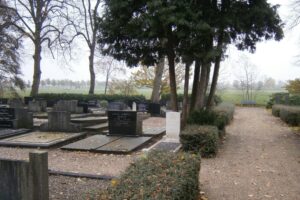







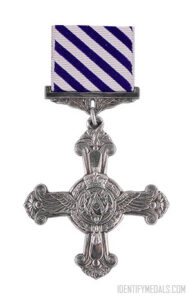










Leave a Reply